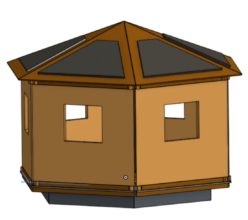Concrete is without doubt an extraordinary construction material.
Concrete became very popular in construction because it is very solid, it can be formed easily to any form and it is quite water resistant. These qualities make construction the favorite for heavy construction and excentric architecture.
Another reason for its popularity are cheap energy, the development of trucks with increased capacity and last but not least the missing CO2 compensation.
The core of the problem is cement which contributes 8% to the global CO2 emissions as it needs 1450 degrees to have lime stone and clay reacting to cement clinker. However, the chemical reaction produces even more carbon dioxide then the fuel for the heating…
You can find a detailed description of the environmental impact of cement production at https://en.wikipedia.org/wiki/Environmental_impact_of_concrete
But cement is not all it takes to produce concrete:
To produce concrete you also need gravel of a specific quality, preferably rounded (not sharp), so the liquid sand-cement mix can surround and include the gravel well. It must have a certain size needs to be washed. As you typically don’t find this quality in the neighbourhod it must be produced and imported over long distances.
Then you need sand. The sand must not be round come to resist to rolling. That’s why the sand of the desert cannot be used. Instead it must be taken from the shore or the sea and transported even further distances.
This leads to the fact that about 1/3 of the traffic emissions is caused through the construction. That is more then twice the amount the whole aviation is producing.
The numbers above described the production of concrete only, which is only the first part of the life cycle.
During the usage of the building the high thermal conductivity comes in place: Concrete transport twice as much heat then bricks – and about 10 times more then wood. Therefore concrete buildings need much more energy for heating or else an expensive isolation must be added.
At the end of the life cycle the concrete must be demolished. During this phase the stability has a negative impact as you need massive machines to break down the building and to recycle the material.
